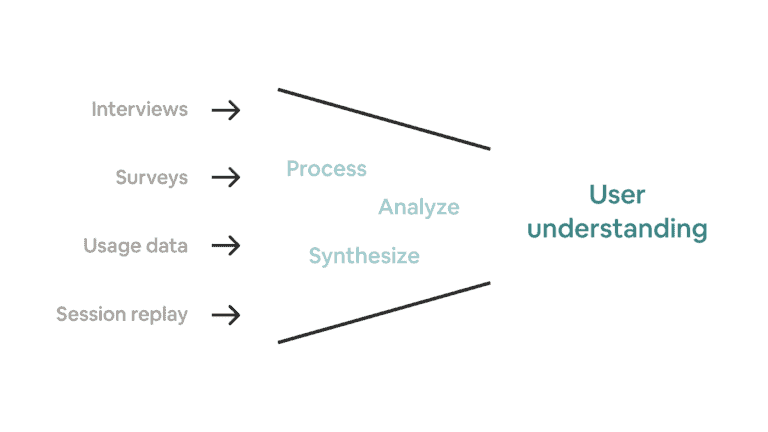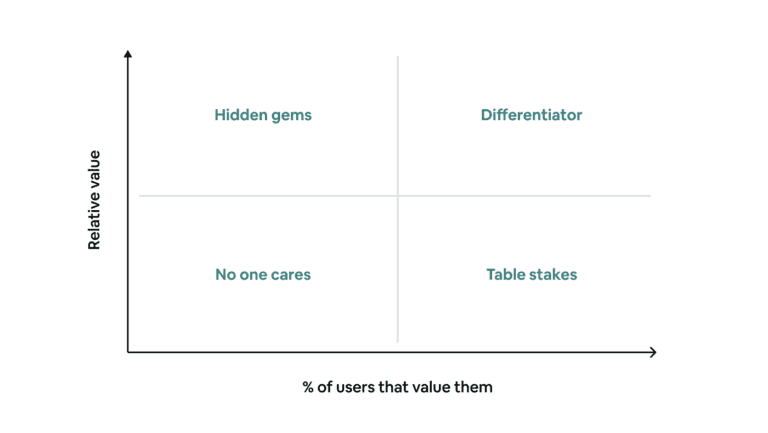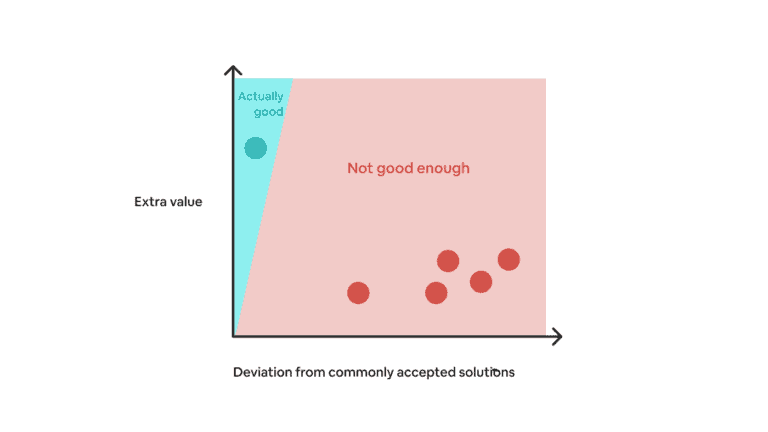“So, what exactly does a product manager do?”
After years spent as a product manager, I still don’t have a good answer to this question. I’ve accepted that there will never be a “catch-all” definition of the role. A product manager’s job varies greatly across different contexts, and each context requires a unique set of mental models, skills, and strategies to be successful.
To illustrate the fluid nature of product management, I thought it would be interesting to show how the role of a product manager differs across business models, company stages, and seniority levels through analogies.
As a quick note, these analogies aren’t perfect, so don’t get too caught up in the technicalities. They are here to put the different flavors of product management into perspective, so you can approach the role with more clarity.
Business model
The word “product” in product management can be misleading. What users consider to be your product often extends beyond the software layer, but your direct influence as a PM doesn’t always do. Understanding the anatomy of your business will help you determine how to work with other functions to create value for your users.
To understand this idea, let’s picture product managers as interior designers: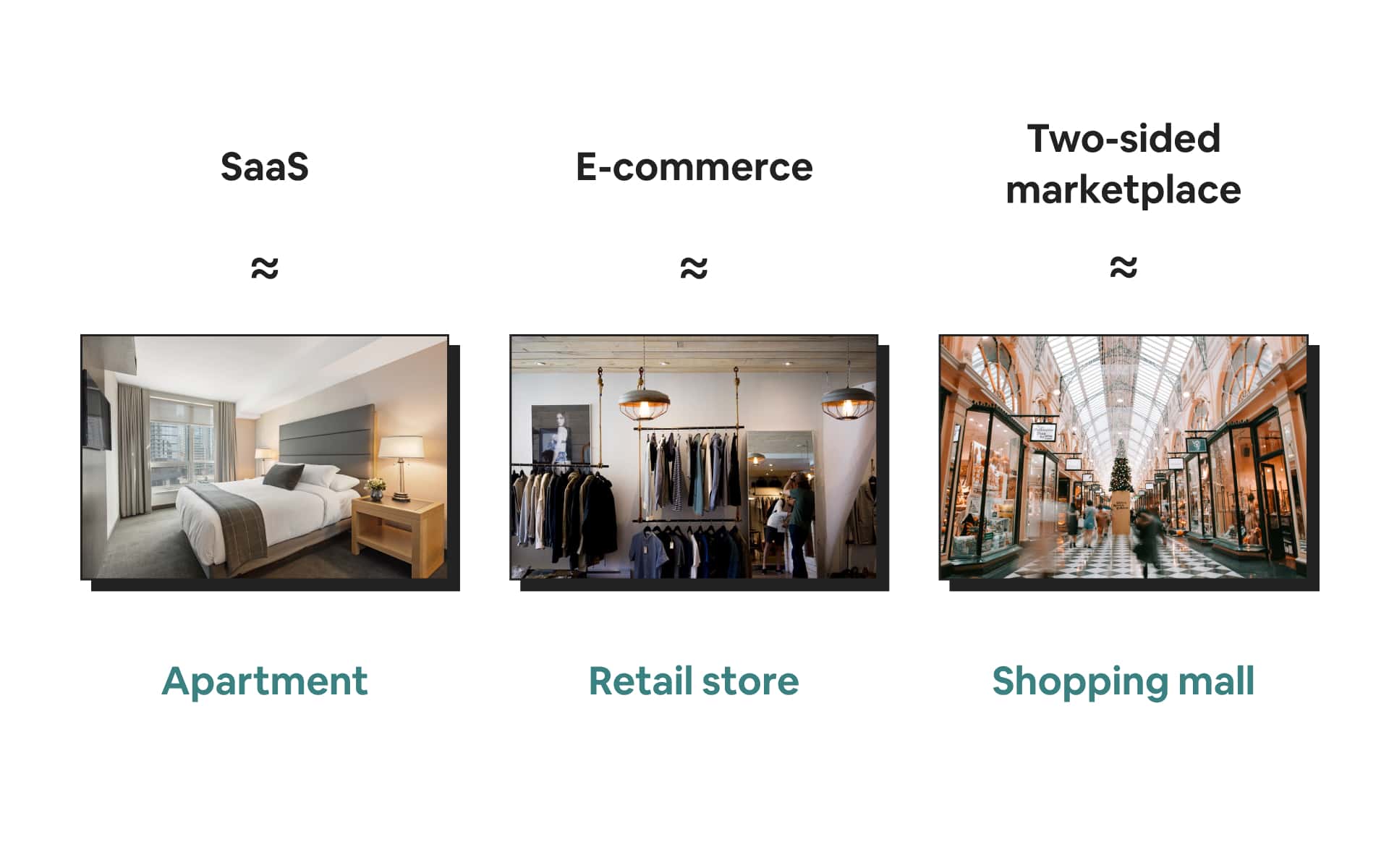
SaaS ≈ Hotel
The indoor space is your product. The layout, décor, and amenities are the features. You have direct influence over them, and they are the main reason why customers come to you. In other words, you define what your company sells.
E-commerce ≈ Retail store
While the shopping experience — in-store navigation, ambiance, checkout — is important, the items on the shelves are what customers are ultimately after. You might not decide what gets stocked, but you can design a more efficient stockroom layout or improve merchandising displays to boost sales.
Two-sided marketplace ≈ Shopping mall
Your company provides a venue for vendors (supply) and shoppers (demand) to transact with each other. You are in charge of designing the overall indoor space without taking away each store’s unique characteristics.
But the space alone isn’t enough. There also needs to be a team that helps source, vet, and manage vendors, and another team that helps attract shoppers. Together they make up the overall “product.”
Company stage
Companies like Google don’t operate like small 10-person startups, and neither do their product teams. Many brilliant PMs struggle with the transition from one company stage to another because they underestimate the differences involved.
A good way to understand this is by viewing product managers as chefs:
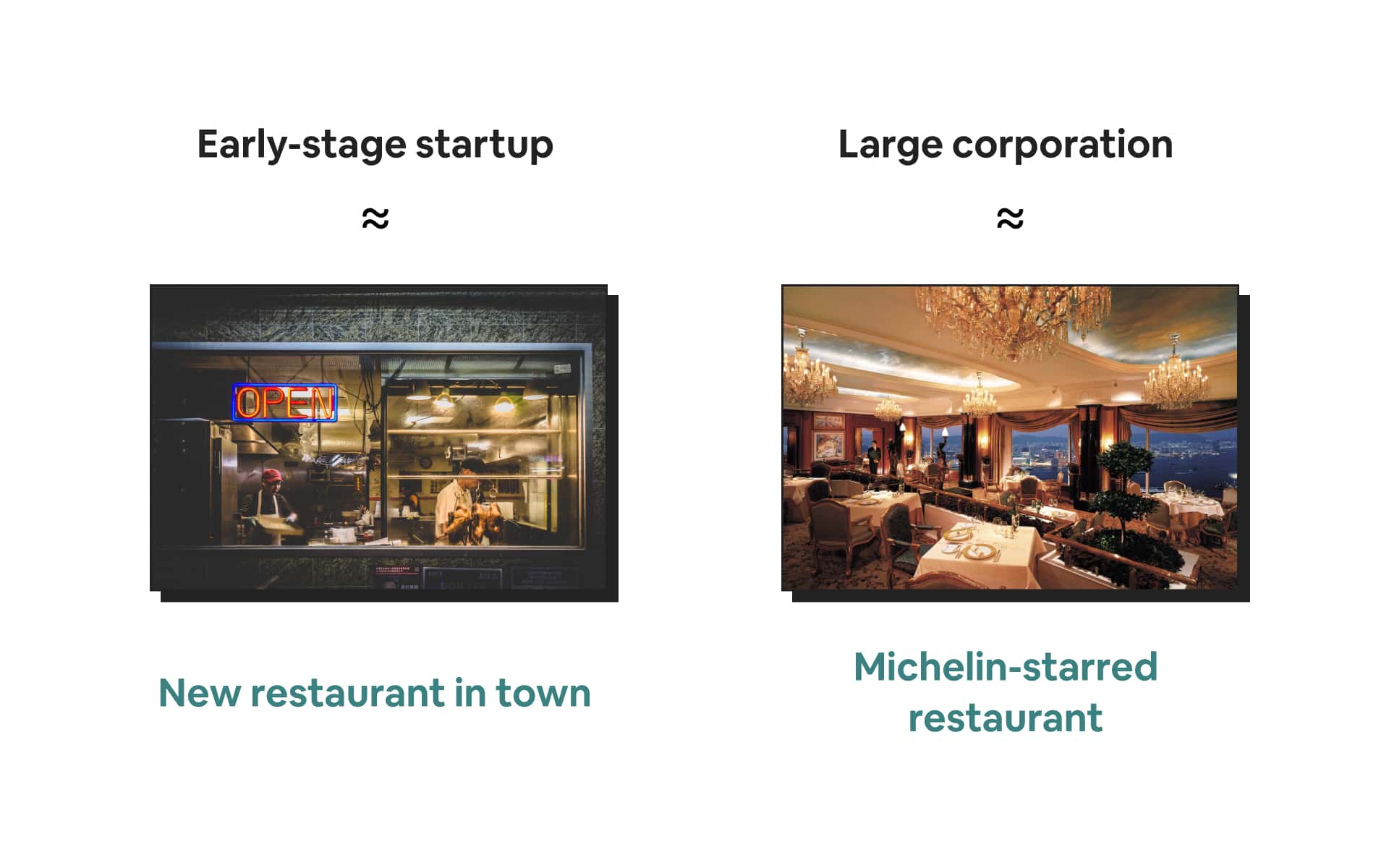
Early-stage startup ≈ New restaurant with a big ambition
The restaurant’s goal is to make a wave in the local culinary scene. Your dishes need to “wow” restaurant-goers with a unique take. To do so, you should constantly run moonshot experiments to figure out what customers will bite (pun intended).
With the limited resources available at this stage, you can only afford to perfect 1-2 signature dishes that’ll get you noticed, and improve the rest one at a time.
The small team size grants you lots of authority to make decisions. However, for the same reason, you will likely need to help with tasks outside the kitchen, such as serving tables, to keep the restaurant running.
Large corporation ≈ Michelin-starred restaurant with a long tradition
The restaurant’s menu is already defined. Your job is to fine-tune a specific item without losing the flavor customers have loved for decades. Innovation can happen, but it will be slow and infrequent, given how much there is to lose.
Due to the reputation this establishment has built, every detail of your work is held to the highest standard, even for something as simple as washing dishes. The scope of your responsibilities might seem trivial compared to chefs at smaller restaurants, but the audience you are impacting is significantly larger, considering the restaurant’s international fame.
Seniority level
As your PM career progresses, you don’t simply perform the same tasks at a better level. Instead, your focuses shift from features to people, tactics to strategy, projects to processes, and execution to vision. Failing to acquire these new skills is a common reason why senior PMs don’t make the jump to become product leaders.
We can understand this concept by comparing a PM team to a basketball team:
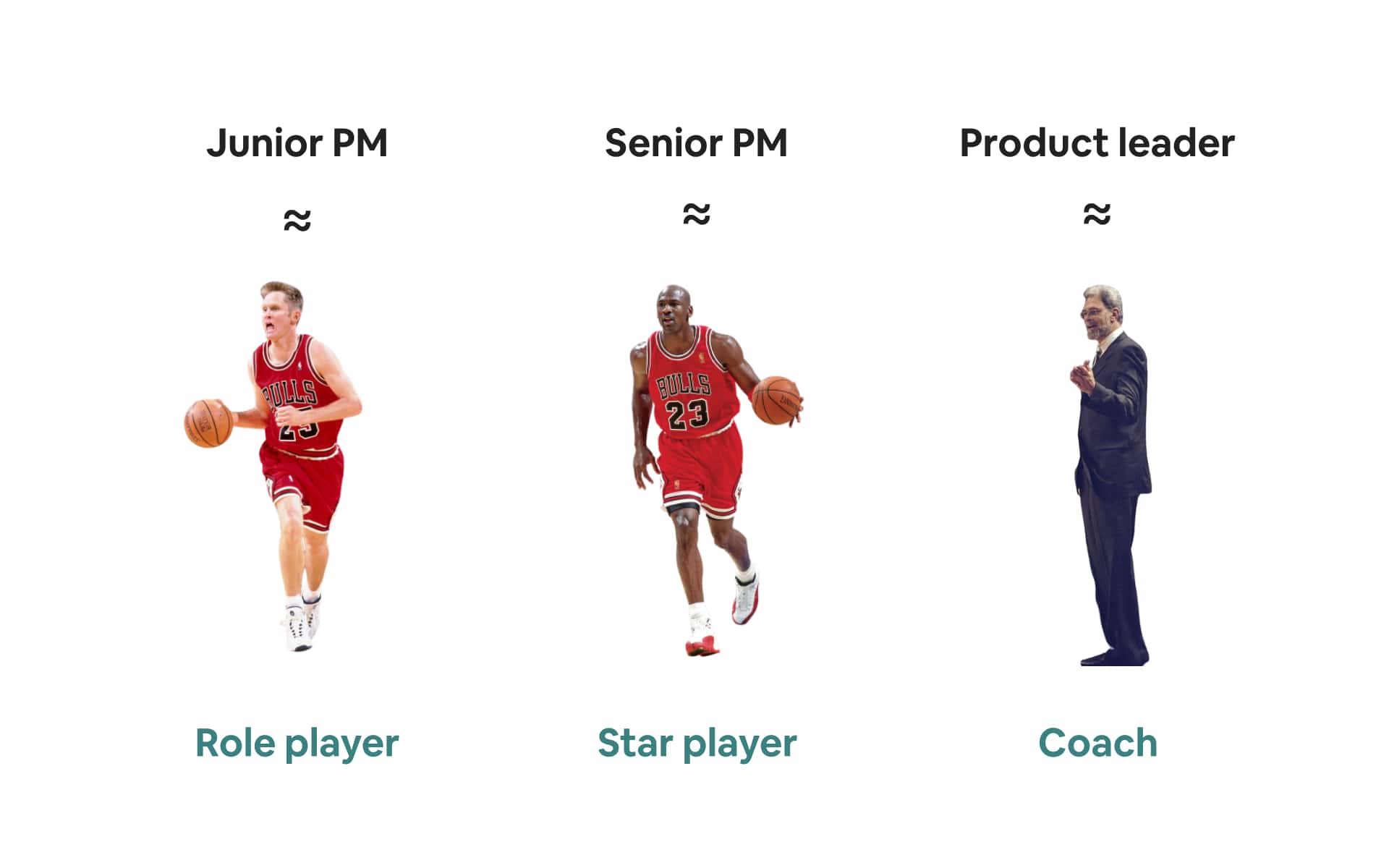
Junior PM ≈ Role player
You’re on the court to perform specific tasks assigned by the coach. Your performance will be graded by how well you can execute them, regardless of the team’s win or loss. You don’t get to call plays because you haven’t proven yourself. At this level, your primary goal is to earn more playing time on the court.
Senior PM ≈ Star player
You lead execution on the court, with the coach’s trust to make calls and shape the game plan. As a star player, your individual skills are already proven, but the real test is turning them into wins for the team. Sometimes, this means you also have to mentor young players even though it’s not part of your official scope.
Product leader (Director, VP, CPO) ≈ Coach
You are beyond your playing days. Your role has evolved into coaching players, allocating playing time, and crafting a game strategy.
Off the court, you also have to work with the team owner and general manager on recruitment, budgeting, PR, and other duties you didn’t handle as a player. Although you don’t have direct control over every action on the court, you are held more responsible for the results than ever before. At this level, the team’s success is your individual success.
–––––––––––
These simplified examples represent just the tip of the iceberg. The real world of product management is vastly more complex. We have not even touched on variables like industry, category maturity, feature vs. growth work, B2C vs. B2B, team structure, web vs. mobile, and so on. When you mix them all together, it’s nearly impossible to find two identical contexts.
Perhaps this is exactly what makes building products so much fun.


